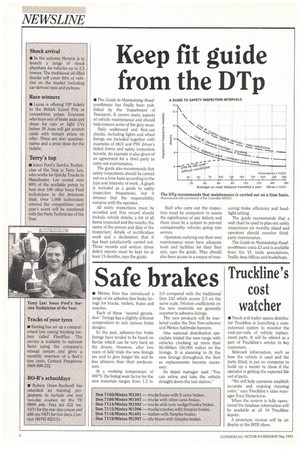Keep fit guide from the DTp
Page 88

If you've noticed an error in this article please click here to report it so we can fix it.
• The Guide to Maintaining Roadworthiness has finally been published by the Department of Transport. It covers many aspects of vehicle maintenance and should help remove some of the grey areas.
Daily wallsround and first-use checks, including lights and wheel fixings are included together with examples of HCV and PSV driver's defect forms and safety inspection records. An example is also given of an agreement for a third party to carry out maintenance.
The guide also recommends that safety inspections should be carried out on a time basis according to the type and intensity of work. A graph is included as a guide to safety inspection frequencies, but it stresses that the responsibility remains with the operator.
All safety inspections must be recorded and that record should include vehicle details; a list of all items inspected and the results; the name of the person and date of the inspection; details of rectification work and a declaration that it has been satisfactorily carried out. Those records and written driver defect reports must be kept for at least 15 months, says the guide. Staff who carry out the inspection must be competent to assess the significance of any defects and there must be a system to prevent unroadworthy vehicles going into service.
Operators carrying out their own maintenance must have adequate tools and facilities for their fleet size, says the guide. They should also have access to a means of mea suring brake efficiency and headlight setting.
The guide recommends that a wall chart be used to plan out safety inspections six months ahead and operators should monitor thirdparty maintenance.
The Guide to Maintaining Roadworthiness costs £3 and is available from the VI, trade associations, Traffic Area Offices and bookshops.












































































































